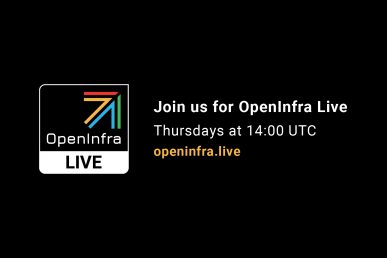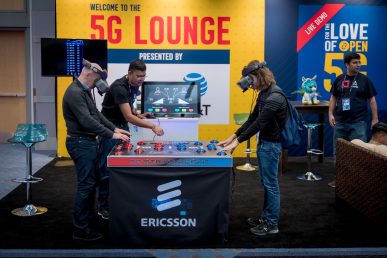Join the people building and operating open infrastructure at the OpenStack Summit Berlin in November. The Summit schedule features over 200 sessions organized by use cases including: artificial intelligence and machine learning, high performance computing, edge computing, network functions virtualization, container infrastructure and public, private and multi-cloud strategies.
Here we’re highlighting some of the sessions you’ll want to add to your schedule about NFV. Check out all the sessions, workshops, lightning talks and working groups on this topic here.
Airship-Deckhand: Reliable, predictable configuration management
Airship is a collection of interoperable components which offers cloud providers a way to manage their cloud provisioning and lifecycle management in a declarative, reliable and predictable way. Airship-Deckhand epitomizes the platform’s declarative-driven approach by managing the life cycle of Airship configuration documents. It provides mechanisms for reliably storing, validating and rendering Airship documents in preparation for their deployment. It does this by leveraging OpenStack components such as Barbican for secret storage and Keystone for authentication and multi-tenancy.
In this talk, Felipe Monteiro and Matt McEuen of AT&T, provide an overview of the Airship-Deckhand project, its role within Airship and how it can be leveraged as a standalone component for realizing storage, configuration and life cycle management for documents, doing so with the scale, speed, resiliency and operation predictability demanded of network clouds at scale.
Details here.
The present and future of a fully open source smart OpenStack cloud
OVS hardware offloads to improve the efficiency of a virtualized OpenStack cloud has been presented in the past at various summits. The Queens release marked a major milestone in delivering smart offload technology to end users. During this talk Franck Baudin of Red Hat and Ash Bhalgat of Mellanox Technologies will recap what’s available to configure OVS hardware offloads using open source components, OpenDaylight and Neutron ML2 Plugin. They’ll also share early field guidance on deployment of a smart cloud. Details here.
The need to succeed: Tearing down NFV interoperability walls
While there’s little doubt that NFV can revolutionize the telecom industry, the final question marks have not vanished completely. Many industry professionals see that NFV is lagging behind its true potential. One sticking point is the lack of real multi-vendor interoperability. Due to this, the deployment of a new NFV can easily expand into months instead of the assumed easy and quick play. In order to take the technology to the next level, verified interoperability is a must.
This talk by Carsten Rossenhoevel of EANTC hopes to resolve some of these questions. EANTC, a widely recognized independent test center, has been around long enough to see how important interoperability is. Rossenhoevel will use real-life test examples featuring leading vendors to underline where interoperability is essential and why. Details here.
Using the Telekom OpenStack platform for radio access network virtualization
A future-facing mobile network architecture requires flexibility, adaptability and programmability to deliver services of expected quality. Radio Access Network (RAN) is a technology that connects individual devices to other parts of a network via radio links. The presentation shows by professor Michael Einhaus and Andreas Hartmann from
Deutsche Telekom shows how they virtualized RAN software components using container technology from a decentralized hardware based platform into the Open Telekom Cloud. Thus, a flexible, resilient and scalable ecosystem has been created to perform further research on topics including network traffic performance. The demo session will show the concept and how to use the application in the OpenStack environment. Details here.
Verizon use case: Remote hardware lessons learned
The notion that compute nodes can be deployed anywhere, ranging from a data center to a donut shop to the top of a light pole or the bottom of the ocean. An often overlooked consideration for use cases is the significant difficulties of deploying, managing and servicing the hardware itself in remote locations. While we can be reasonably sure that the hardware deployed in a data center will be well cared for, many remote locations have substantial hardware and environmental constraints. In this intermediate session, Verizon’s Beth Cohen and Jason Kett along with Dell’s Glen McGowan will share Verizon’s experience in packaging and deploying the uCPE device hardware in support of its Virtual Network Service product. Details here.
See you at the OSF Summit in Berlin, November 15-18 2018! Register here.
// CC BY NC
- OpenStack Homebrew Club: Meet the sausage cloud - July 31, 2019
- Building a virtuous circle with open infrastructure: Inclusive, global, adaptable - July 30, 2019
- Using Istio’s Mixer for network request caching: What’s next - July 22, 2019

)










